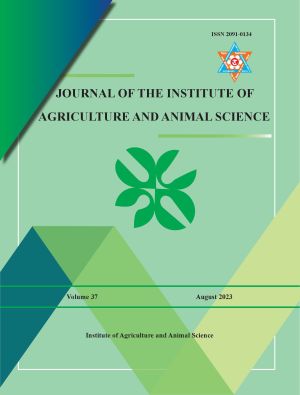Moringa oleifera: A Boon to Agriculture
DOI:
https://doi.org/10.3126/jiaas.v37i1.56991Keywords:
Alkaloid, Antifungal, Biopesticide, MultivitaminAbstract
Moringa (Moringa oleifera Lam.), also known as the horseradish tree, drumstick, or sajna, is a multipurpose tree that is found around the world in tropical and subtropical climate zones. Having various medicinal and nutrition properties, it is also known as miracle tree. This review study was done for easy access and dissemination of scientifically proven and culturally practiced uses of moringa tree to the agricultural group of Nepal. Different information and data used in this paper were taken from the multiple journals found in online platform. The leaves of the moringa tree are particularly beneficial since they are rich in protein, calcium, iron, and vitamin C, while the bark aids in the absorption of heavy metals. The moringa plant’s leaf extracts have a number of beneficial effects, including anticancer, antibacterial, and antifungal characteristics. Making fermented plant juice from leaves and seeds can be used as organic fertilizer in agriculture. Application of moringa leaf extract throughout the booting, milking and heading stages significantly reduces wheat aphid populations. To control pests in stored grain, extracts from different moringa tree parts are employed. Moringa oleifera seed methanolic extract can be used to control Callosobruchus maculatus and Sitophilus oryzae on their respective grains. Application of the growth hormone present in moringa leaf extract is said to boost crop output by 45%. Due to its good green manure and fencing capacity, moringa plays crucial function in agroforestry system. Therefore, moringa is a multipurpose tree because of its benefits to agriculture, environment and human health.
Downloads
Downloads
Published
How to Cite
Issue
Section
License
Copyright (c) 2023 Tribhuvan University Institute of Agriculture and Animal Science

This work is licensed under a Creative Commons Attribution-NonCommercial 4.0 International License.

